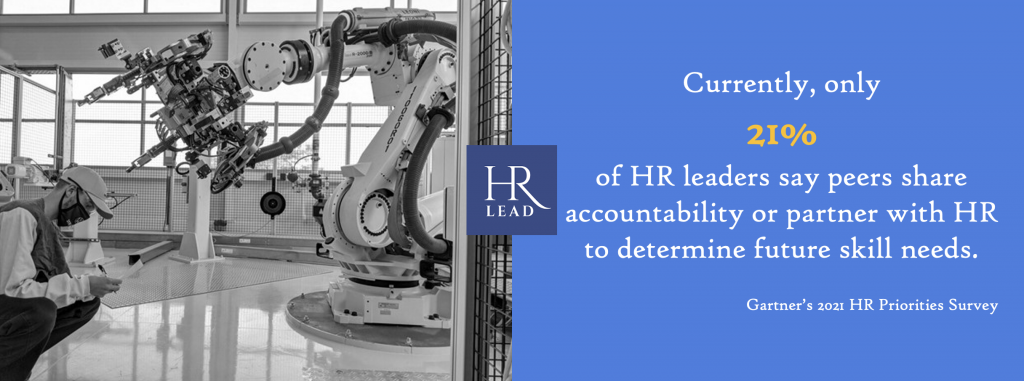
One year ago, I have already posted about the strategic importance of workforce re- and upskilling, but I have realised, that – considering the relevancy of the topic – I can’t emphasise this enough.
From business point of view future critical skills and competencies are one of the most obvious criteria of growing the business, improving operational excellence, executing business transformations, innovating for competitive advantage, managing risk and regulatory demands.
The biggest challenges of HR leaders are that
- they don’t know what skill gaps their current employees have
- their peers don’t share accountability or partner with them to determine future skill needs
- they don’t effectively integrate learning into employee workflows
- they can’t create skill development solutions fast enough to meet evolving skill needs
HR leaders must move from predictive (previously done by L&D function) to dynamic approach in which all impacted stakeholders work together to sense shifting skill needs and find ways to develop skills at the time of need.
It practically means that HR
- facilitates a skill-sensing network of cross-functional skills stakeholders to sense and monitor shifting skills as well as leverage labour market data to address skill gaps.
- identifies and implements skill accelerators to develop skills at the time of need by building on existing employees and high impact learning opportunities.
- ensures 2-ways skill transparency: empowers employees with relevant information to make timely skill decisions that align their interests with organizational needs.
Without an action plan derived by both HR and frontline managers for the entire workforce no re-and upskilling exercise is likely to succeed.


